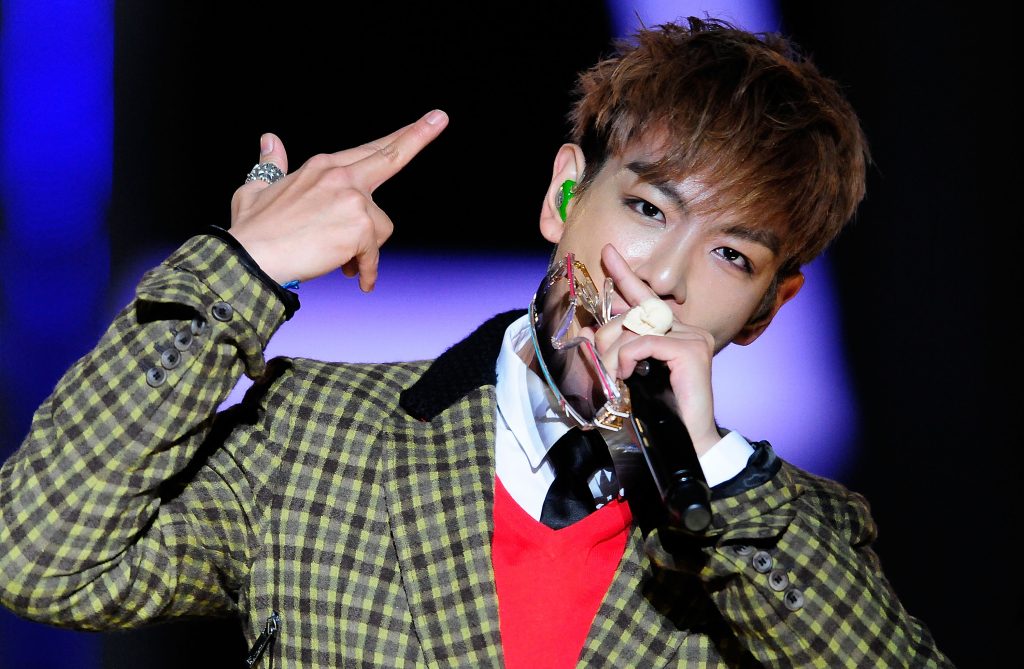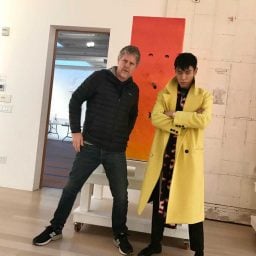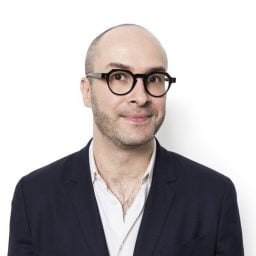Korean pop star Choi Seung-hyun has been out of the spotlight for a while—first due to his mandatory military service and then the global pandemic. But behind the scenes, he’s been busy not only making new music, but also assembling a formidable art collection. The star known as T.O.P sat down with the fall 2021 Artnet Intelligence Report for his first interview in years, dishing on his personal path to the art world and his vision for the future of his collection.
Here are five notable takeaways from the interview. To read the full profile and find out more about what Choi collects, download the Artnet Intelligence Report, available exclusively to Artnet News Pro members. Not yet a member? Subscribe here.
1. Art runs in his family.
Choi grew up in a family of artists and art educators. His maternal great-grandfather was Kim Whan-ki (1913–74), a key postwar artist in Korea, whose abstract paintings have sold for as much as $13 million at auction. One of his three aunts also ran an art school where Choi was “forced” to learn drawing and painting for three to four hours a day after his elementary school classes ended. The experience was “traumatic,” he said, because he realized he would never live up to his own expectations.
2. Art became a tool for him to process anxiety.
“I was depressed as a child, feeling this darkness and anxiety,” Choi recalled. His great-grandfather’s paintings “really settled me, helped me focus.” The experience instilled in him a lifelong love of art.
3. His first purchase was a bit of a dud.
Choi’s big break came in 2006, when he was featured on BIGBANG’s debut album. (His stage name stands for “The Original Pimp.”) He used the money he earned to buy four large paintings by an emerging artist known as KAWS. Each cost $7,000. “I was young,” Choi said. He subsequently realized he didn’t really like the work and never bought KAWS again.
4. He finds most of his art inspiration on Instagram—for one specific reason.
Choi is real-life friends with a number of artists he collects, including Mark Grotjahn and Jonas Wood. But he does most of his art browsing not at art fairs or galleries, but on Instagram. Why? Because he avoids public places as much as possible; he draws mobs wherever he goes. “He can’t go to galleries and museums, especially in Asia, because he gets recognized,” explained his friend, actor Sean Dulake. “So he has to do it on his phone or a computer.”
5. If you meet a Korean teen who knows about Mark Grotjahn, T.O.P is probably why.
Choi has been at the forefront of a major shift in the art market, as Asia’s appetite for contemporary fare ballooned over the past five years. He has also inspired a new generation of art buyers in the process. When he helped organize a Sotheby’s sale in 2016—marking the beginning of the celebrity-curated auction trend—his fans came running.
“When we did a preview for T.O.P in Korea and Hong Kong, we saw a lot of high school students in uniforms—they may not have the money to collect art, but they learn through their idol,” said former Sotheby’s executive Yuki Terase, who organized the sale. “You’d be surprised how much his fans know about Jonas Wood and Mark Grotjahn.”
6. He hopes to open a museum for his art one day.
Choi stores most of the art in a warehouse next to his condo in Seoul; some of it also hangs in his parents’ house. At some point in the future, though, he’d like to open a museum “for the Korean public to enjoy.” While he feels he has a long way to go to create a collection that is worthy of such attention, he noted, “I want to build it before I become a grandfather.”








